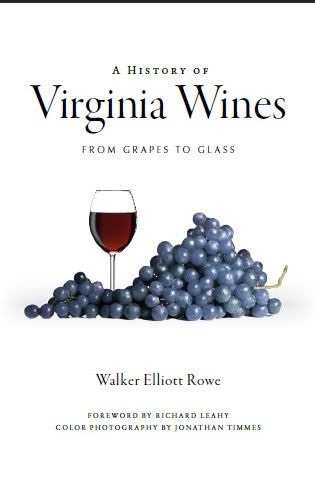“Its my base philosophy and belief that it starts in the soil.”—Karl Dallefeld
Organic vegetable production has taken off in Virginia with so much interest in the buy local food movement. But as I drive around the Virginia Piedmont looking at pastures it is obvious someone needs to put forth the point that diversity in agriculture includes diversity in grass-based farming. After all here in Rappahannock County and elsewhere there are far more acreage devoted to horses, sheep, cattle, and goats than there are vegetables and even vineyards. Yet too many of these pastures are overgrazed deserts of barely palatable fescue grass which is an invasive weed that has become a monoculture. So let’s take a second look and consider that there must be a better way. To do this we turn to Karl Dallefeld an expert from the Midwest on forages. Here he explains how you can rip out all that endophyte-infected fescue and plant something more palatable to your livestock.
Karl Dallefeld runs the forage and seed division of Midwest BioAg, the soil consulting firm founded by Gary Zimmer, author of “The Biological Farmer”. Prior to that he was territory manager in charge of sales and education for Barenburg Seed. He and his son Kyle grass finish beef on their farm.
Is endophyte infected tall fescue bad for horses?
Yes. It is. What happens sometime you can get thickened placenta and basically the foal will suffocate in the afterbirth. They won’t be able to break through. Endophyte is blamed for mares drying up for milk. Their milk dries up. It basically stops their lactation or milk production. For cattle what it does it elevates their interval body temperature and cuts off their circulation to their extremities. So it may be 70 degrees out and you will see cattle trying to cool themselves in a pond. In extreme cases their hooves will come off because of a lack of circulation. The most visible sign is rough hair coats.
Does it affect their weight gain too?
Absolutely.
How do you get rid of tall fescue and establish a better pasture?
[It takes] either one or two years. During the summer we have annual grasses, it might be sorghum sudan or hybrid sudan grass or Italian rye grass. Those are examples of what can be done. An example might be take your first grazing off in the spring and put in sorghum sudan or sudan when it is the appropriate time. Graze that and then till it under. Come in with winter rye or triticale [a hybrid of wheat and rye]. You can get a grazing on that in the fall. In the spring take another grazing or two and do your spring seeding and come back in with another summer crop. Then do a fall seeding of your extended pasture again. So you have two summers of a break crop flushing out the seed bank the Kentucky 31 or the tall fescue. Then you are going to have a clean pasture. You probably will not totally get rid of the 31 but you will suppress any of it with endophyte. Then you will have 7 years of dairy quality, grass-finish-beef high quality pasture.
In our pastures I believe diversity is a part of forage quality. Here [on his farm] I use a soft leaf tall fescue, meadow fescue, perennial rye grass, timothy, orchard grass. I like ladino clover, trefoil, red clover. On top of that I want to plant some forbs whether that be chicory or plantain. A common name [for plantain] might be “buckhorn”.
If you have millet that would be a great break crop to get rid of Kentucky 31, One thing to remember: this is a long process because no one should tear up all their ground in one year. Do 10-20% per year so that you don’t tear up all your forage.
What do you think of MaxQ fescue, an endophyte free fescue advertised in many magazines?
It has its place the further south we go the more relevant it comes. It is just as course and rough as Kentucky 31. We are losing forage quality. If all you have are a beef cow herd it might not be so bad. [He means cattle that will be shipped off elsewhere to gain slaughter weight.] For grass finished beef or dairy we need the highest quality forage.
How difficult is it to maintain a stand of alfalfa? [Alfalfa is a legume which is notoriously difficult to grow due to pressure from weeds and insects. It is high in protein and since it is a legume it adds nitrogen to the soil.]
If you can do it I think alfalfa is one of the better forages for winter feed and also for drought tolerance . [The] Ph needs to be at least 6.8. Calcium, phosphorous, magnesium [need to be at the correct levels]. Use a leaf hopper resistant alfalfa. Get [the soil mineral levels] up where your plants are producing more sugars so the insects are producing less damage.
What do you think of the practice of grazing tall fescue in the dead of winter? [Some people do this rather than bale it as a way to reduce costs and have a winter pasture. ]
That is one of the advantages of it because it will maintain its quality longer into the winter. Anytime you are not pulling a round bale or you are not supplemental feeding it is a dollar saved. I would prefer it be mixed with clovers and other grasses and have a higher forage quality to it. But that’s a good way to reduce winter feed cost for livestock.









No comments:
Post a Comment